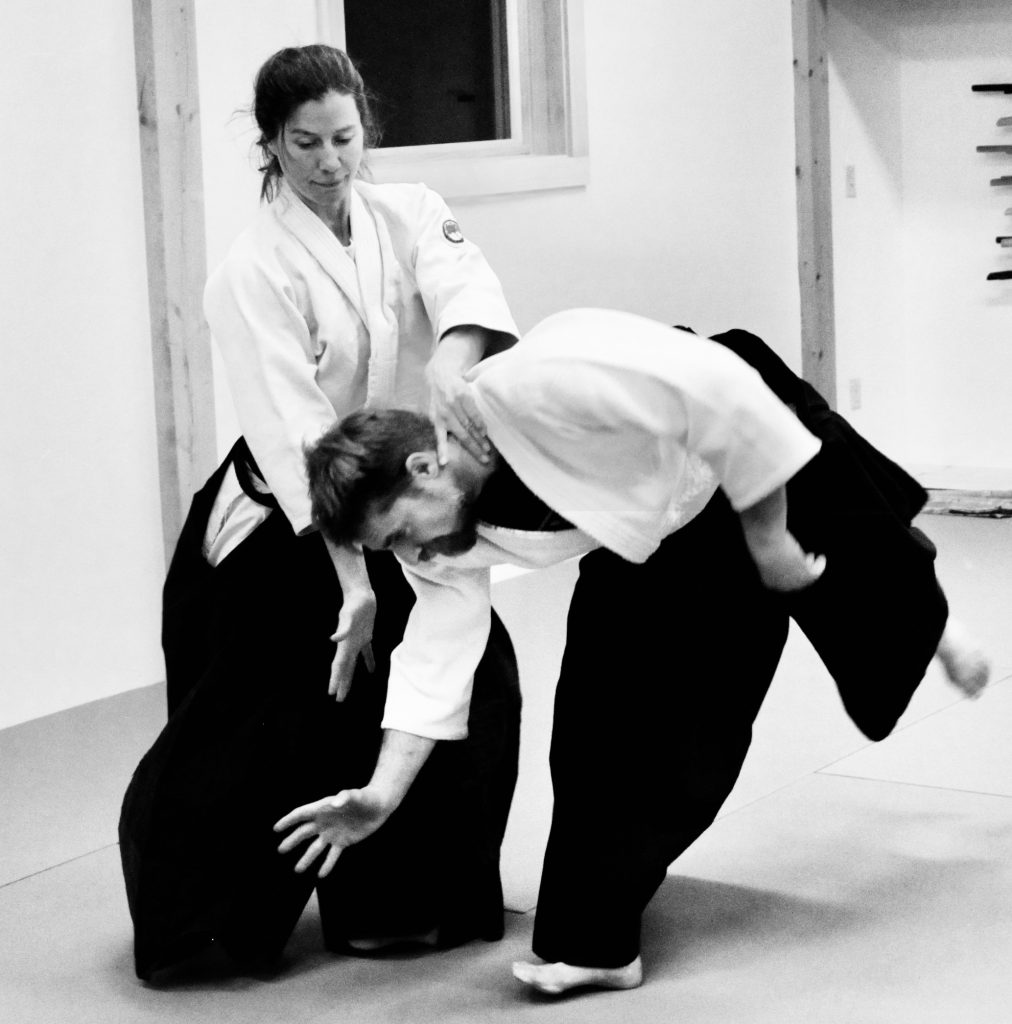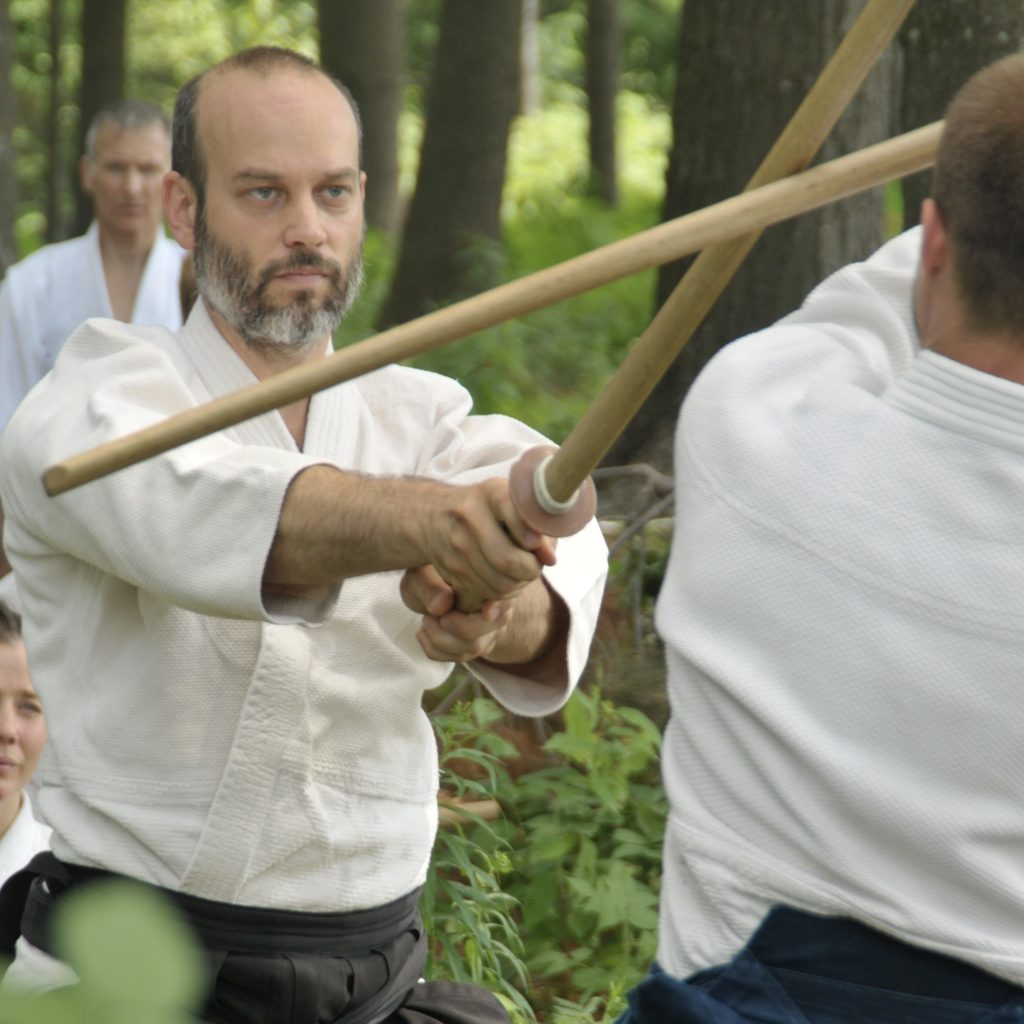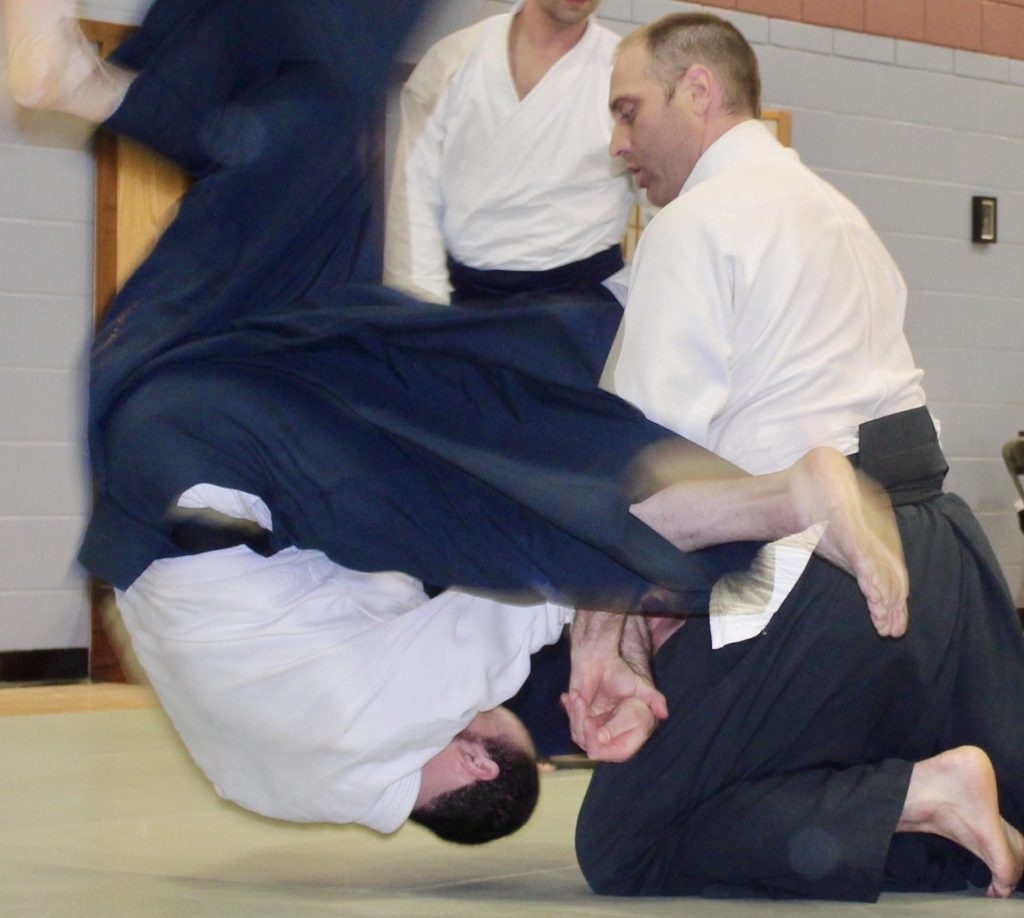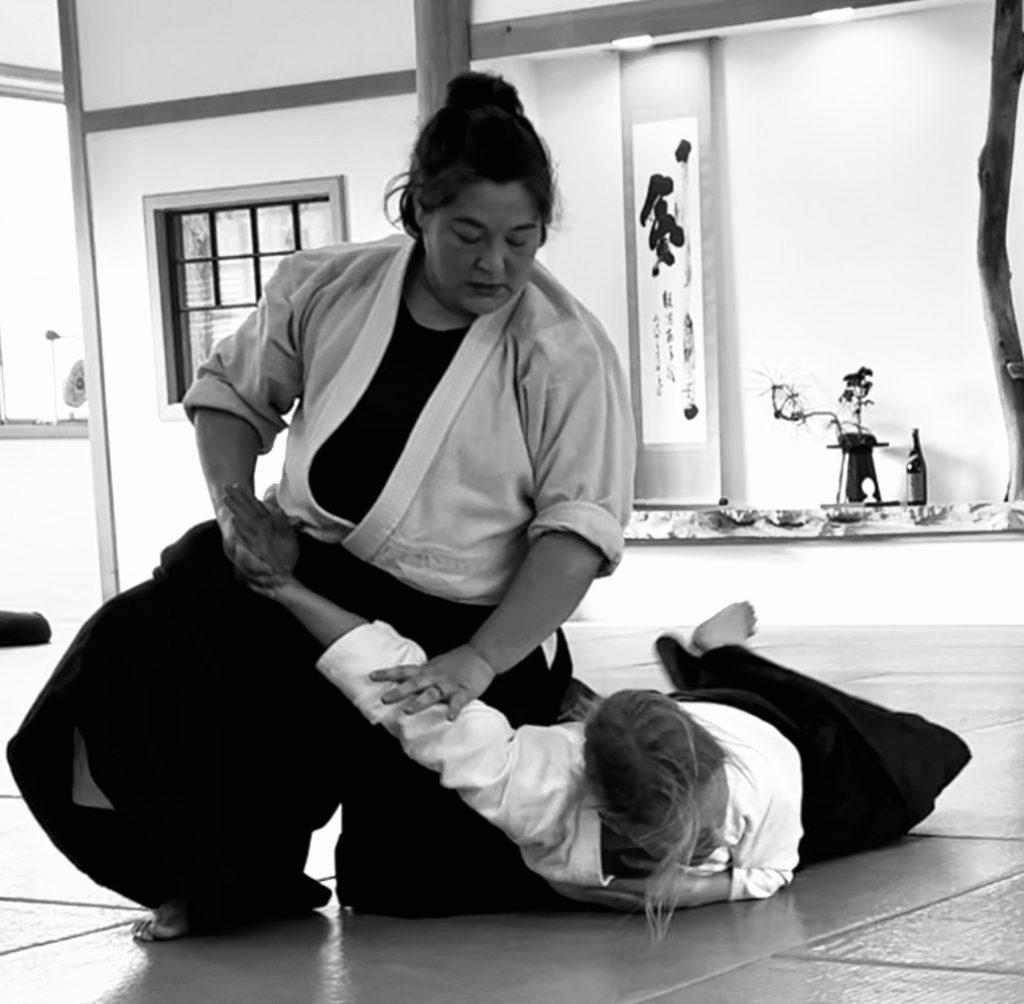Additional Instructors





Heidi Albright, 6th Dan, Shidoin
Albright Sensei started aikido in 1993 under Arnie Dinowitz Sensei and Liz Dinowitz Sensei. She began her intensive study of aikido with Benjamin Pincus Sensei at in 1997 when Aikido of Champlain Valley opened at its original location in Winooski, VT, and graduated from the soto-deshi program in 2007. She was awarded the rank of rokudan in 2024 from the International Aikido Federation in Tokyo, Japan, and is a certified instructor (shidoin) and member in good standing of Birankai North America. She and Pincus Sensei are the co-instructors at Cloud Mountain Living Arts and Aikido, a country dojo in central Vermont. In addition to being a student and instructor of aikido, she holds a M.S. in Biology, works as an artist, craftsperson and farmer.
“When we practice aikido, we must keep our center and harmonize with another human being in a particular moment, a moment that can change in unexpected ways. We contain lightness and incredible weight, depending on our approach to working with others and the circumstances.
I believe deep understanding comes from studying ukemi through kokyu connection. I encourage students to cultivate sensitivity in your hands and hearts as an integral part of learning aikido. If you improve your connection, you will improve your ukemi. As your ukemi improves, so too will your technique.”

Jason Pepe, 5th dan, Shidoin
Jason began his Aikido practice in 1997 when he moved to Burlington, Vermont. He has studied with Benjamin Pincus Sensei since Aikido of Champlain Valley opened its doors. Jason also studies Muso Shinden Ryu Iaido in which he currently holds the rank 2nd dan.
In addition to his Aikido practice, Jason teaches college physics, plays music in local bands, and spends time with his family.
“When I first moved to Burlington I wanted to continue my training in Jiujitsu. I thought of Aikido as a very gentle art that I might like to practice when I got much older. After I began training with Pincus Sensei I realized that Aikido training could be very intense. Aikido has some very basic principles, which are often very difficult to put into practice. This challenge is part of what I love about Aikido. One small insight can lead to a greater understanding of one’s entire practice. I find that Aikido weapons training is essential in improving one’s empty hands practice as it enables one to feel the relative strengths and weaknesses of body positions and movements. When I teach Aikido, I try to incorporate some fundamentals of weapons training in basic body movements.”

Chris Farnham, 4th Dan Fukushidoin
Chris began his Aikido journey in 2003 when he enrolledf Pincus Sensei’s Aikido class at the University of Vermont. For five years, he trained diligently with Pincus Sensei.
In 2008, Chris moved to central Japan to teach English as part of the Japan Exchange Teaching (JET) Program. During his seven years in Japan, Chris immersed himself in the local Aikido community, forging meaningful relationships with esteemed instructors and regularly traveling to train at renowned dojos across the country including Aikido Kimori Dojo in Nagoya, The Ibaraki Shibu Dojo in Iwama, and the Aikikai Hombu Dojo in Tokyo.
Upon returning to Vermont in 2015, Chris resumed training with Pincus Sensei and maintains connections with his Japanese Aikido teachers through regular visits to Japan.
Outside the dojo, Chris is a high school teacher at a therapeutic school in the Burlington area, supporting students with diverse and specialized needs. His teaching philosophy, both in Aikido and education, is rooted in patience, empathy, and fostering personal growth.

Emilie Inoue, 2nd dan
Emilie Inoue began training at Aikido of Champlain Valley in 2006 and currently holds the rank of nidan. She grew up in Tokyo, Japan, and moved to Vermont in 1994 for high school, where she has lived ever since.
For Emilie, Aikido is more than just a martial art—it offers a way of moving through the world with awareness, adaptability, and a commitment to connection. She is especially interested in how Big Aikido principles can be applied off the mat, particularly in social and environmental justice work. Finding ways to bring the philosophy of Aikido into daily life has been a meaningful part of her practice.
She is grateful to be part of a supportive dojo community and looks forward to continuing to learn alongside others.
.
